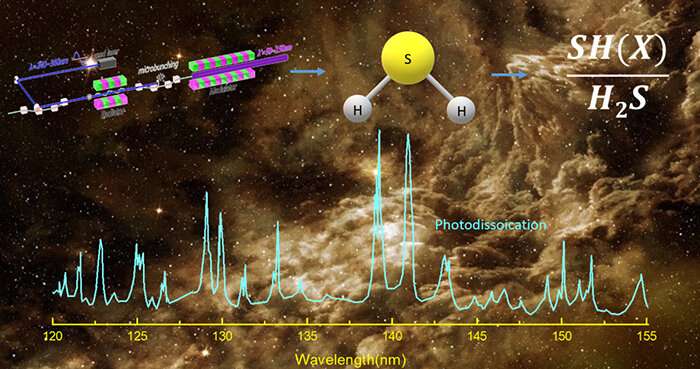SH radical production in H2S ultraviolet photolysis measured by DCLS photodissociation dynamics experimental station. Credit: ZHAO Yarui and ZHOU Jiami
Research group led by Prof. YUAN Kaijun and Prof. YANG Xueming from the Dalian Institue of Chemical Physics (DICP) of the Chinese Academy of Sciences revealed the photochemical rationale of SH(X)/H2S abundance ratios in interstellar medium with the help of Dalian Coherent Light Source. The results were published in Nature Communications.
H2S is regarded as the priority product when the sulfur atoms impinging on interstellar ice mantles, due to the high-hydrogen abundances and the mobility of hydrogen in the ice matrix.
Early analyses from measurements of interstellar SH radicals using the GREAT instrument on SOFIA showed SH /H2S abundance ratio of ~13% , which was smaller than that predicted by commonly used astrochemical models.
The current study revealed that only ~26% of photoexcitation events resulted in SH(X) products by convoluting the wavelength dependences of quantum yield for forming SH(X) products, the H2S parent absorption and the interstellar radiation field.
The results indicate that the three-body dissociation is an inevitable source of SH(X) radical depletion, which need to be added into the related astrochemical models.
More information: Jiami Zhou et al. Ultraviolet photolysis of H2S and its implications for SH radical production in the interstellar medium, Nature Communications (2020). DOI: 10.1038/s41467-020-15343-4
Journal information: Nature Communications
Provided by Chinese Academy of Sciences
























